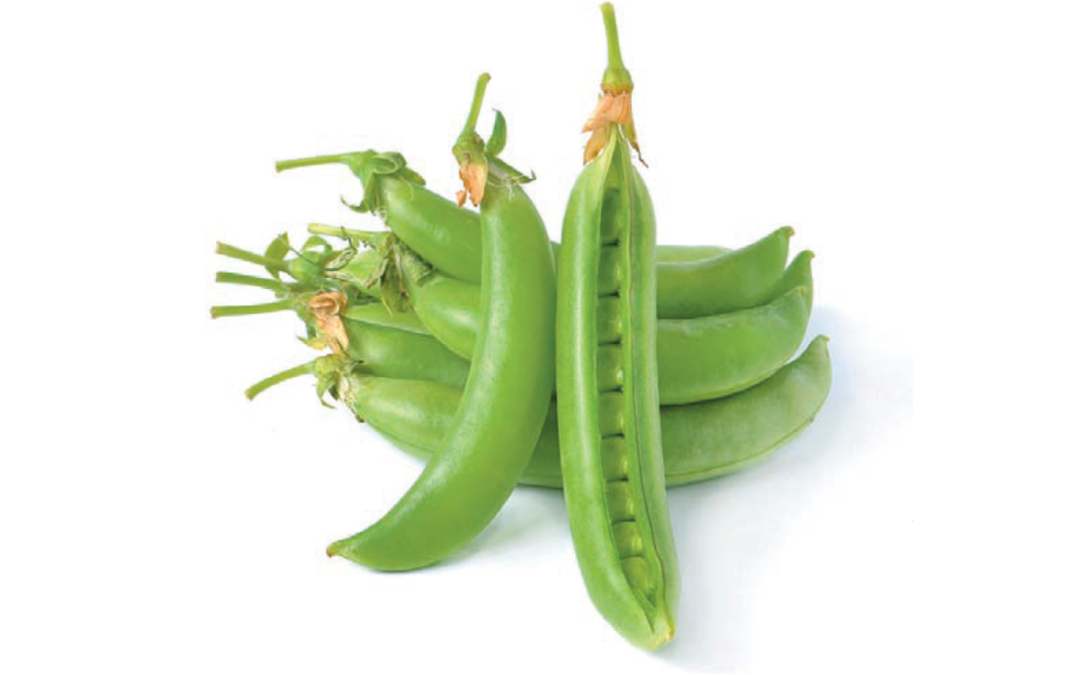By Jessica Linnell, PhD, Family & Community Health, Oregon State University Extension Tillamook County
When I think of peas, I think about how they are most often the boring sidekick to the meat and potatoes. Growing up, any time we had steak and baked potatoes, or ham and mashed potatoes, there they were: a mound of mushy, deflated, army-green peas. It was only recently that I come to appreciate that this often overlooked (and sometimes disdained) vegetable, when prepared well, can add great flavor, texture, and nutritional value to meals.
There are many different types of peas. Green peas (also known as garden peas or English peas) grow in a pod but are “shelled” or removed from the pod for cooking or eating. When selecting fresh green peas, they should be plump and firm and not rattle around inside the pod. Snow peas (also called Chinese pea pods) should be flat with very small peas inside the pod. The pod and peas inside are eaten together. Sugar snap peas have plump, fleshy pod with peas inside. Both the pod and the peas inside are eaten together. They are crisp and snap like green beans when they are bent.
Fresh peas are in season from April through July and frozen and canned peas are available all year long. To store fresh peas, refrigerate them soon after picking or buying. Store them in an open bag or unsealed container. They should keep for about 3 days.
Frozen peas are excellent to have in the freezer since they keep for a long time, and you can add frozen peas without thawing into pastas, stews, and soups just before you serve it. For the best value, buy frozen peas in large bags that you can reseal, or portion out what you need in smaller freezer bags or containers. Frozen peas will keep in the freezer for up to 8 months. Keep them in a resalable freezer bag or container so you can use what you need and continue to keep the rest frozen.
When purchasing canned peas, look for ones that are low in sodium. If you want to cut more sodium, you can rinse and drain the canned peas and that can further reduce the sodium by about sixty percent. Canned peas keep for 2 years or longer, and be sure to check the use by date on the can.
Did you know that peas are a good source of vitamins A and C? You can take advantage of this great nutritional value by adding fresh, frozen, or canned peas to your meals. Peas make a great nutritional and delicious addition to your meals.
- Peas make a great addition to green salads.
- Try sugar snap peas with your favorite dip.
- Add peas to brown rice or barley pilaf.
- Add fresh or frozen peas to your favorite pasta dish, soup, or stew.
- Mix peas with other veggies and chicken or tofu for a stir-fry.

Creamy Pea Salad
Recipe Source: Debbie Lane, Oregon Food Bank
Number of servings: Serves 4-6 as a side dish
Time for preparation (including preparation and cooking): 10 minutes
Ingredients:
- 1 24 oz-bag of frozen peas, thawed*
- 1 cup celery, chopped
- ¼ cup red onion, finely chopped
- ¼ cup light mayonnaise
- ¼ cup non-fat plain Greek yogurt
- 1 teaspoon apple cider vinegar
- 1 teaspoon sugar
- ¼ cup cooked bacon, crumbled (optional)
- ½ cup sharp cheddar cheese, shredded
- Salt and pepper to taste
*Note: To thaw peas safely, thaw in the refrigerator or heat in a microwave using the defrost setting. Fresh or canned peas can also be used in this recipe but need a little preparation before adding them to the bowl in step 2. If using canned peas, drain and rinse them well with cold water. If using fresh peas, bring 2 quarts water to a boil, add the peas and boil them for 2-3 minutes until they are tender but not mushy. Immediately drain and rinse them in cold water to stop them from cooking.
Directions:
- In a large bowl, combine mayo, Greek yogurt, vinegar, sugar, salt and pepper.
- Add peas, celery and red onions and stir until well combined.
- Stir in the cheese and bacon crumbles.
- Refrigerate for at least 2 hours to chill before serving.

